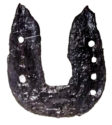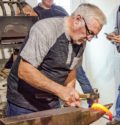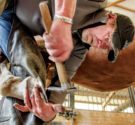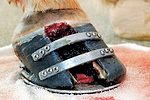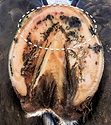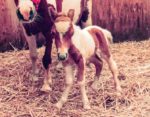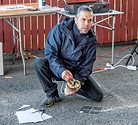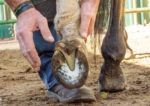Advertise Follow Us
American Farriers Journal
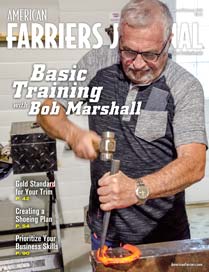
View Archived Issues
January/February 2019
Volume: 45
Edition: 1
American Farriers Journal is the “hands-on” magazine for professional farriers, equine veterinarians and horse care product and service buyers.
-
Table Of Contents
Table Of Contents
Bob Marshall Emphasizes the Fundamentals of Hoof Care
Hall of Fame Farrier Shares 60 Years of Experience with Forging and Shoeing TipsRead MoreShoeing For A LivingDon’t Limit Your Hoof-Care Options
Hall Of Fame farrier Danvers Child wants as many tools at his disposal as possible to benefit the horse.Read MoreWhen are Clips Appropriate and Inappropriate?
Usage should be determined on a horse-by-horse basisRead MoreChalklines Help Determine Trim
See how the golden ratio helps farrier Steve Kraus of Cornell University teach students how to develop their eye for trimmingRead MoreCase StudyKeratoma Case Report: Trail Riding Horse
Team approach and addressing sound shoeing principles help horse recover from keratomaRead MoreAdd Mechanical Advantage into a Horseshoeing Prescription
Reducing concussion and understanding how the ground distributes energy is criticalRead MoreCorrecting Foals’ Limbs Without Surgery
Ontario farrier finds rapid results in straightening angular limb deformitiesRead MoreTwo Ideas for Foal Extensions
At the 2018 Forge of July farrier gathering, veterinarian and farrier Scott Fleming shows two solutions he uses to correct toed-in foalsRead MorePractical Advice for Reading the Horse
At the Northeast Association of Equine Practitioners meeting, Swiss farrier Stefan Wehrli discussed his thorough plan for evaluating a horseRead MoreHoof Care for the Nervous Horse
Patience is the key to earning the trust and respect of anxious horsesRead MoreUnderstand the 4 Facets of Wealth Management
Your money management skills are as important as your hoof-care servicesRead MoreWhat Were Farriers’ Online Footcare Interests in 2018?
Here’s a look at the “most viewed” content during the past year that appeared on the American Farriers Journal’s digital media platformsRead MoreResearch Journal: January/February 2019
The information, ideas and opinions expressed are those of the author and do not necessarily represent those of the United States Department of Agriculture.Read More -
Featured Articles
Featured Articles
Bob Marshall Emphasizes the Fundamentals of Hoof Care
Hall of Fame Farrier Shares 60 Years of Experience with Forging and Shoeing TipsRead MoreShoeing For A LivingDon’t Limit Your Hoof-Care Options
Hall Of Fame farrier Danvers Child wants as many tools at his disposal as possible to benefit the horse.Read MoreCorrecting Foals’ Limbs Without Surgery
Ontario farrier finds rapid results in straightening angular limb deformitiesRead More - Digital Edition
-
Online Extras
Online Extras

